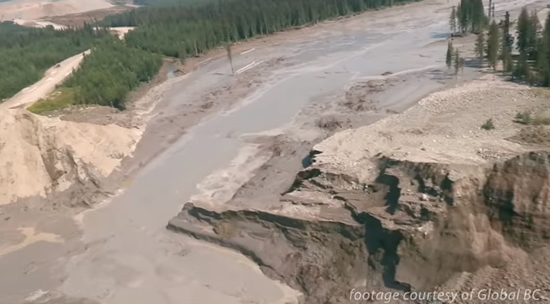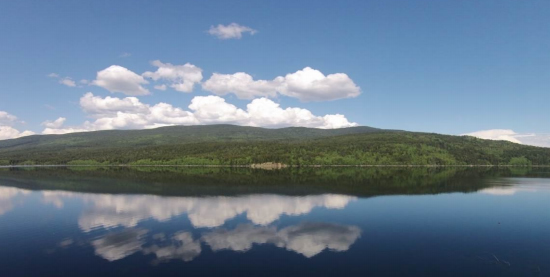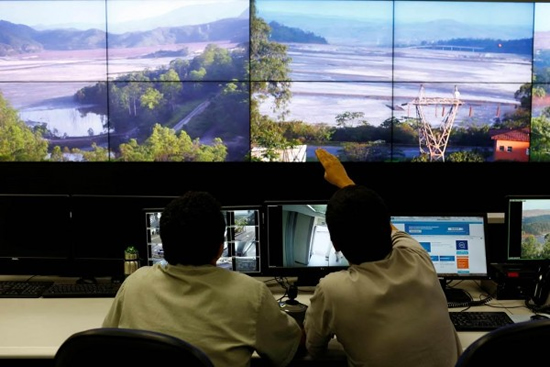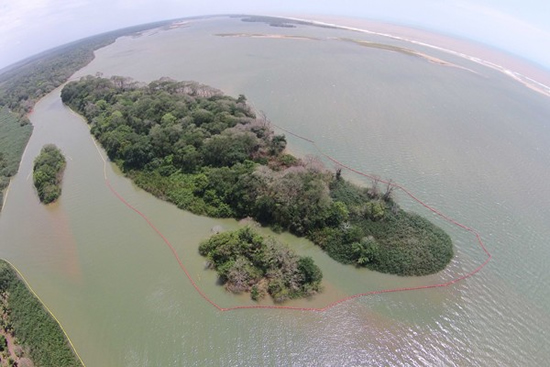The mining disasters at the Mount Polley mine in British Columbia, Canada and at the Samarco Mine in Minas Gerais, Brazil were both dramatic examples of containment failures. Each caused significant environmental damage. The tailings dam failure in Brazil caused multiple fatalities. Mount Polley’s failure occured in August 2014; Samarco’s in November 2015. While Mount Polley’s operations restarted earlier this month, Samarco’s remain on hold, though iron ore operations surrounding the mine continue to produce. Engineers have identified new mining risks at both locations.
New concerns of breaching to earthen dams have been found. Updates follow from each site.

NEW RISKS AT MOUNT POLLEY
The Mount Polley containment breach released millions of liters of contaminated slurry and water into Polley Lake. After a period of closure the mine reopened, moving tailings into a pre-existing cell. The Vancouver Sun reports that the temporary pit’s volume is rising quickly, a situation that some analysts feel threatens to contaminate groundwater.
The paper notes that the region’s snow is building and that the Springer Pit’s mix of contact water and tailings sludge has risen at more than 30 cm per day. (The Cariboo Pit, where the breach occurred, remains closed.) The pond’s level is now within 7 meters of a mark that in theory is when the risk of contamination to groundwater and the surrounding river system increases.

The Springer Pit was repurposed with a belief that it could be a safe storage zone. Imperial Metals, the mine’s owner, was approved for modified recommencement of operations in July 2015, with a stipulation that the Springer Pit be used and that no more than 4 million tons of ore could be processed per year. Imperial Metals notes that this is half of the processing facility’s capacity at the site. The British Columbia Ministry of the Environment felt that with average precipitation taken into account, the pit could sustain restricted operation safely through April.
The mine resumed operations early in November.
The current rate of material building up in the Springer Pit suggests that the groundwater danger mark could actually be reached before the end of December. This concern is based on a high volume of precipitation continuing. Even if the rate of build up slowed significantly, snow melt fears in the spring would likely revive concern.
The Ministry of Environment is currently reviewing a request by Imperial to discharge clean, treated water from the temporary tailings storage cell as a way to control the buildup. The decision, according to the Vancouver Sun, was expected by mid-October but the Ministry has put off ruling and may not until at least the end of November.
In a late July update on the Quesnal River system, the Ministry noted that waterways had returned to essentially normal levels of turbidity, on par with before the mine failure. The water was ruled safe to consume and fish were deemed healthy and safe to eat.
The local communities now find themselves in a difficult position. The mine has been a significant employer in the region; but the possibility of another disaster with above-average snow fall taxing the temporary tailings storage system leaves little comfort.
TWO MORE TROUBLED DAMS AT SAMARCO
The tailings dam failure at the Samarco Mine on November 5 flooded the village of Bento Rodrigues, cost at least 11 lives, and displaced hundreds of families. More than 1,200 have been moved to hotels.
Samarco has worked since with Brazilian prosecutors and the state of Minas Gerais on cleaning up the environmental disaster and supporting the many displaced and affected families.
The Samarco iron ore operation is a joint venture between two of the world’s biggest mining companies, Vale and BHP Billiton.

Two more dams at Samarco have been said to be at risk of breaching now. Mine engineers at the site have been bolstering the dams through various means, including stacking heavy rock against threatened zones. The Selinha and Santarem Dams have been rated with factors of safety of 1.22 and 1.37 respectively, according to Samarco. Efforts to stabilize the dams are being orchestrated to achieve a 1.5 safety factor.
Vale, meanwhile, has said that it is engaged in tailings dam checks at a 115 iron ore sites. The company has significant activity surrounding the Samarco operation. Reuters reports that personnel at those mines are increasingly anxious about safety, highlighting the significant job cuts that have occurred alongside increased productivity demands.

A paper published in 2009 at a conference in Canada indicated that tailings failures typical increase during periods of lower metals prices on the world market. That is exactly the situation being experienced today. With lower prices, mines internationally have been reducing their workforce.
In a November 17 call with investors and analysts, BHP Billiton’s CEO Andrew Mackenzie confirmed that the Samarco operation had signed a Preliminary Commitment, which would guarantee USD $260 million in emergency funds. Mackenzie said the fund would be for “for a wide range of emergency measures, including prevention, mitigation, remediation and compensation for environmental and social impacts of the incident.”
The transcript of the call is available here.
Samarco has opened multiple information centers this week—including in the neighboring state of Espírito Santo—and published information on how it will compensate affected households and dependents monthly going forward.
The work in Espírito Santo (ES) has in some aspects become more immediate. An order was issued this week to prevent contaminated mud from washing into ES waterways. An environmental containment and response plan was demanded, with a daily penalty of USD $2.7 million to be enforced for each day of non-compliance. Samarco responded quickly, beginning with the installation of 9000m of turbidity curtains and other sedimentation controls on November 18. These were set at the mouth of the Doce River.
The damage from the dam failure has been estimated as high as USD $3.7 billion.











